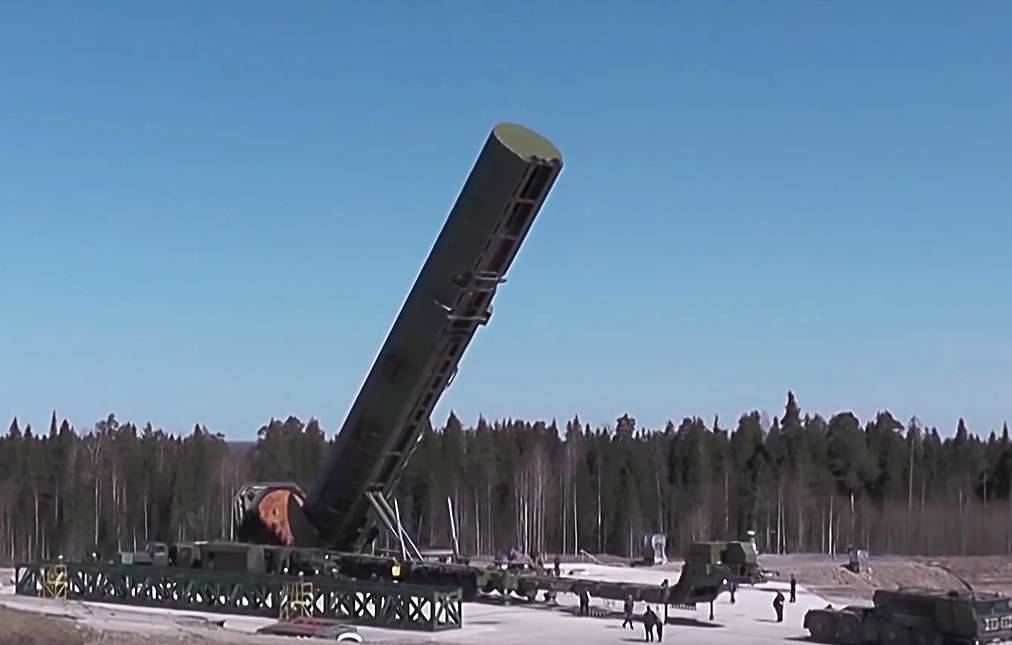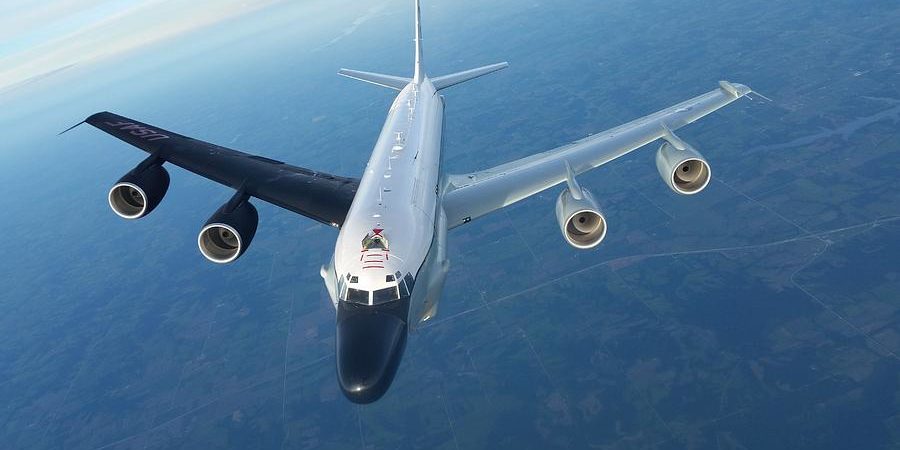In a rare maneuver, two American surveillance planes, the RC-135S, are said to have flown toward Russia’s east coast on a mission to monitor the test of Russia’s new Sarmat ICBM on 20 April.
Chinese Warships, Fighter Jets Heading To Australia’s Backyard ‘In Weeks’ As Beijing Flexes Its Muscles In Southern Pacific — Reports
The first full-scale test flight of Russia’s new RS-28 Sarmat intercontinental ballistic missile (ICBM), one of six ‘super weapons’ unveiled by President Vladimir Putin in March 2018, appears to have spurred the United States Air Forces to deploy these jets even during Ukraine conflict.
The two RC-135S planes, with serial numbers 62-4128 and 61-2663, took off from Eielson Air Force Base in Alaska yesterday and headed in formation two RC-135S aircraft were probably toward Russia’s Far East coast, according to reports.
The plane was shown near St. Matthew Island, an isolated Alaskan outpost in the Bering Sea, in the online flight-tracking software.
The two Cobra Balls are said to have been monitoring the Sarmat’s multiple independently targetable reentry vehicle (MIRV) test warheads when they came back to earth on a specified area at the Kura Proving Ground on the Kamchatka Peninsula, in the Russian Far East.
I can't recall seeing two Cobra Balls operating together on the same mission.
-USAF RC-135S Cobra Ball DOLLY27
-USAF RC-135S Cobra Ball SUMO11 pic.twitter.com/iRVagLeggg— Manu Gómez (@GDarkconrad) April 20, 2022
The Cobra Ball would usually park itself closer to the Russian shore, with an orbit region off Klyuchi, which is also on the Kamchatka Peninsula. As a result, two RC-135S aircraft were probably ‘caught short,’ with reentry happening before the planes arrived at their intended station.
Pentagon’s Top Boss ‘Mighty Impressed’ As Elon Musk’s SpaceX Thwarts Russian Attempts To Hack Its Starlink Satellites
The US military has employed this aircraft to gather intelligence and information on the disputed regions regularly. The US Air Force RC-135W Rivet Joint Electronic Reconnaissance Aircraft previously went over Donbas / Donbas on December 11, as reported by the EurAsian Times.

Last year, the Russian military scrambled a MiG-31 fighter jet to escort a US surveillance plane RC-135 as it approached the Russian border over the Pacific Ocean. “The Russian fighter crew identified the aerial target as a US Air Force RC-135 strategic reconnaissance aircraft and escorted it over the waters of the Pacific Ocean,” Interfax then reported, citing the Russian Pacific Fleet.
Why Where The Two Aircraft Used?
The initial assumption of the mission appears to be that US intelligence authorities were so keen for intelligence on this first-of-its-kind ICBM test that they dispatched two RC-135S planes to observe it.
F-16 Vipers For US Navy – With ‘Aim To Tame’ Chinese, Russian Fighter Jets, US Navy Adds USAF’s F-16Vs To Its Arsenal
“I am unaware of any two-ship RC-135S mission ever, although that doesn’t mean one didn’t happen to verify systems calibration,” Robert S. Hopkins, III, an independent scholar, aviation historian, and a former Air Force pilot with experience flying 17 different C-135 sub-variants, including both the RC-135S Cobra Ball aircraft involved, told the warzone.
“There were missions where the RC-135S (59-1491) and RC-135E (62-4137) flew together, but those were rare (both jets were lost in 1969, in January and June),” headed.

“Until they had three Cobra Balls, we just had 662 and 663, and one was often in programmed depot maintenance or some mod, or off-station for another collection (ocean target rather than Kura). A dual mission could have happened, but no one has ever shared that with me. I can’t prove a negative, but I’ve never heard of one,” Hopkins added.
However, having two planes in the air at the same moment might have additional advantages. One possibility is that the Cobra Balls were collecting data at various altitudes to cover the ICBM’s re-entry. It may also have been a case of putting new equipment through its paces on different planes.
Defense Experts also believe that the two-ship Cobra Ball expedition might have a more simple rationale as well. It’s possible that the primary RC-135S at Eielson suffered a technical issue, necessitating the launch of the base spare. The primary jet then lifted off and accompanied the spare in the same place once it was flight-ready.
Boeing RC-135S
The Boeing RC-135 is a four-engine medium-weight reconnaissance aircraft designed and built by Boeing Defense and Integrated Systems for the United States Air Force (USAF).
It is also supplied to the Royal Air Force of the United Kingdom. It is based on the C-135 Stratolifter and is capable of performing intelligence, surveillance, and reconnaissance (ISR) missions.
The RC-135S Cobra Ball is an improved Rivet Ball with electro-optic sensors for long-range surveillance of ballistic missile flights. The RC-135 can ascend at a speed of 1,490 meters per minute. The aircraft’s top speed is around 933 km/h.

The range and service ceiling are respectively 5,550km and 15,200m (50,000ft). The plane is roughly 78,743kg in weight, with a maximum take-off weight of 133,633kg. The four F108-CF-201 high bypass turbofan engines on the Boeing RC-135 can each provide 21,000lbf of thrust.
The CFM56 engine, produced by CFM International, is designated F108 by the US military. According to the stringent FAR 33-6 ingestion requirements, the engine decreases fuel consumption, noise, and pollutants.
The aircraft’s onboard electro-optic sensors track geo-located signals within the electromagnetic spectrum and provide the information to operators through a secure satellite communication data link.
- Contact the author at ashishmichel@gmail.com
- Follow EurAsian Times on Google News




